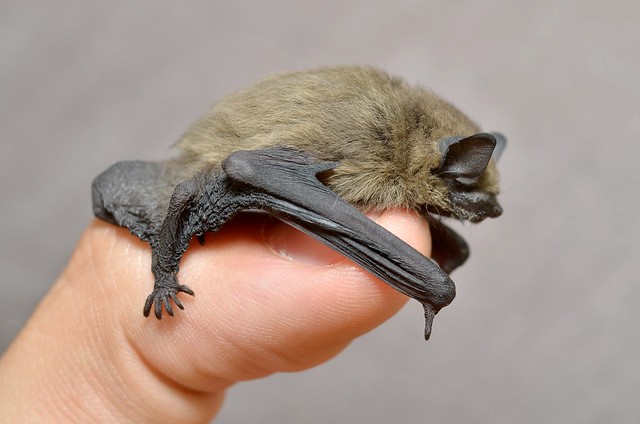Bat sightings aren't all that unusual in the grounds of Blair Castle; there are plenty of good roosting places in all the old stonework and lots of trees and undergrowth harboring insects to feed on. More unexpected, was spotting a bat flitting about near St. Bride's Kirk at midday on Monday. Bats being nocturnal by habit, it was fairly unusual to see one happily going about the business of catching itself a good meal.
What drew first attention to the bat, immediately marking it apart from a bird, was its flight. Not smooth like a bird's, but jerky and halting, almost as if it were leap-frogging through the air and lunging from one wing-beat to the next, changing direction quickly to keep up with its prey. Not having a camera to hand, there is no photo to show, and bats can be tricky to identify visually, but the most likely suspect is a pipistrelle, one of the UK's most common
chiropteran ('hand-winged') mammals. There are two species of pipistrelle commonly found in the UK, the
common pipistrelle (Pipistrellus pipistrellus, our likely suspect
) and the
soprano pipistrelle (Pipistrellus pygmaeus). Both are around the same size, their bodies are about 4 cm long, very small indeed as you can see in the picture above. They are so similar that until the 1990's they were thought to be the same species and can often only be accurately distinguished from each other by their call, inaudible to the human ear without a bat detector which can pick up their very high frequency sounds.
It may be highly unusual
but it isn't unheard of, for bats to come out in the daytime. Usually they sleep in the day and come out to hunt at night, making great use of their fantastically accurate
echolocation skills to hone in on insects and snap them up in mid-flight. The main reason for their nocturnal habit is avoidance of predators but it also means that there are fewer competitors for the same food sources at night. The bat we saw had most likely woken early from hibernation, roused by the milder weather of the last two days and a hungry appetite to satiate. There were definitely a few insects buzzing about, making the best of the warm (early spring?) sunshine, or at least the ones that weren't being snapped up...
- You can find pictures and videos of Pipistrelle and other bats (and more nature besides) at ARKive.org.
- The Bat Conservation Trust have a wealth of information about bats and ways to find out more or get involved with conserving these charismatic creatures. They also have a very useful section on dealing with bats in your house.



